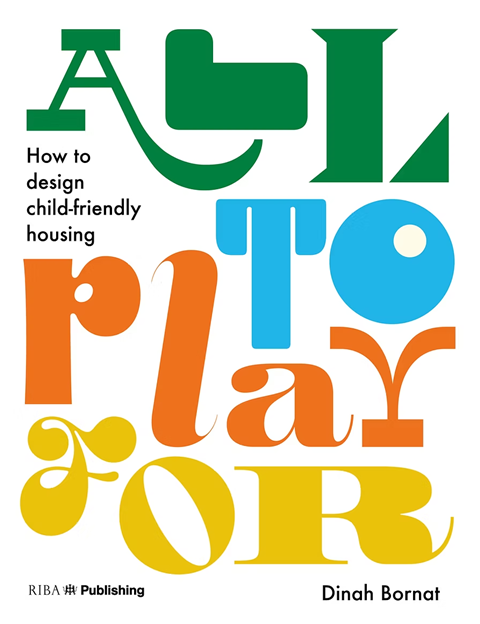Ken Worpole explores Dinah Bornat’s call for child-friendly neighbourhoods and asks why the UK continues to fall behind its European peers

The dream persists that one day again we will recreate the child-friendly streets, housing estates and neighbourhoods beloved of documentary photographers of the first half of the 20th century. The odds are, I think, stacked against this. Even Dinah Bornat, who with her architectural colleagues has devoted so much thought to the issue, and brings evidence of how this dream has at least been realised in a few outposts of radical design in northern Europe, nevertheless equivocates. Perhaps this is not actually a question of housing policy, but one of urban social politics writ large?
It is unlikely that the volume housebuilders and developers currently dominating the housing market in the UK are going to pay much attention to the conviviality and connectivity of their value-engineered product to the wider neighbourhood. Where is the financial return on that?
I suspect this is why so many of the new private developments I regularly see from the train going out from Liverpool Street Station out into rural East Anglia are little more than defensible, car-dependent stockades. Under the present government’s ambition for increasing housing supply, largely dependent on these same developers, the requirement for significant elements of more communal social housing continues to be watered down.
Many of the more inspiring case studies in Bornat’s book, which is beautifully designed and generously illustrated with photographs and ground floor plans, come unsurprisingly from local authorities, housing associations and housing co-ops. Less surprising is that so many of these come from elsewhere in Europe, where social housing is still more mainstream.
One of her principal concerns is that ‘the concept of playable landscapes, once part of (planning) guidance, has been lost to equipped playgrounds.’ The reason for that concern is that in order for children to travel to even the nearest of fixed-equipment playgrounds, they have to negotiate a streetscape still designed and managed principally for cars, plus a growing number of ‘just-in-time’ delivery vans adding an extra element of danger to the mix.
As Bornat shows, most children prefer to play near where adults are present, usually close to home, and notes that where children are playing out, adults often seem to find themselves congregating or socialising nearby. ‘Children are the generators of community life’ is the conclusion she cites approvingly, as we should too. The same research also came down on the side of cul-de-sacs, ‘which seemed to offer spaces for children to play and were frequently used’, a reprieve from the once forbidding urbanist judgement that cul-de-sacs were a principal enemy of the connected and networked city.
The fact is that most children for most of the time play spontaneously in games they invent for themselves or update and adapt from long-standing popular traditions, games of chase, counting and skipping games, improvised ball play, rather than wanting to search out a fixed-equipment playground (which is often a choice made by the adults).
The recent international and much-lauded touring exhibition ‘Ricochets: children’s games’, featuring over 30 short films by Francis Alÿs of children in war zones and disrupted landscapes around the world, showed that children will usually try to find the resources and spaces to play in most urban conditions. Even so, this does not mean that in relatively secure and wealthier societies there is no longer any need to provide imaginative informal shared spaces in the design of new housing development, if only to stop the only views out people’s homes being asphalted carports and rows of parked cars.
For these and many other reasons, the neighbourhood is often everything to the child, the very first site of social life and understanding, an understanding to which volume housebuilders in the UK are indifferent if not resistant. As a result, one looks at some of the Dutch and Danish estate layouts and floor plans in Bornat’s book and weeps. Why cannot we do this here?
The author scores brilliantly when showing how many, seemingly completely different estate layouts can still arrive at the same densities. While no doubt it costs more to plan for variety and interest at the outset rather than use a cookie-cutter, in the longer term the sustainability of the neighbourhood and even the commercial value of the homes may be higher if planners and architects are given the time and space to be more creative. ‘All to Play For’ shows the way.
>> Also read: Report calls for national play strategy to reshape neighbourhoods for children
>> Also read: Barratt Redrow commits to accessible playgrounds on all new developments
Postscript
All To Play For: How to design child-friendly housing, by Dinah Bornat, is publshed by RIBA Publishing, 2025.
Ken Worpole’s ‘Brightening from the East: Essays on landscape & memory’ has just been published by Little Toller
















No comments yet